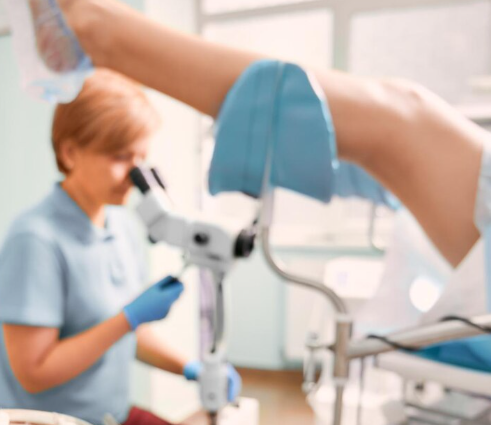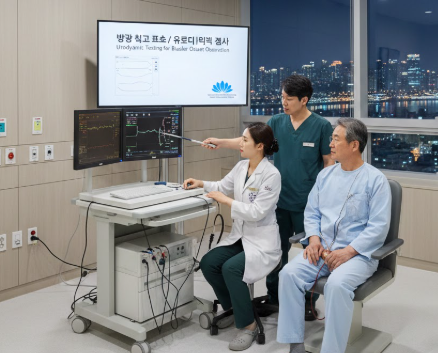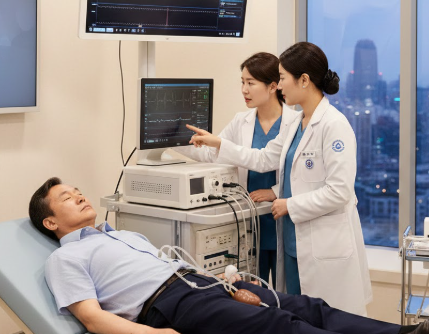Treatment Overview
Laparoscopic Fibroid Extraction Surgery in Korea represents one of the most advanced, minimally invasive surgical solutions for the treatment of uterine fibroids. Korea is renowned globally for integrating state-of-the-art laparoscopic techniques with highly skilled gynecologic specialists, offering patients safe, precise, and patient-focused care. This surgery is designed to remove fibroids effectively while preserving uterine function, reducing recovery time, and minimizing postoperative discomfort.
Uterine fibroids — benign growths of the uterine muscle — are common among women of reproductive age. These growths can cause heavy menstrual bleeding, pelvic pain, infertility, and pressure symptoms. Laparoscopic fibroid extraction surgery in Korea addresses these issues with high precision and minimal invasiveness, making it a highly preferred treatment for women seeking optimal outcomes without extensive downtime.
Leading Korean medical institutions such as Samsung Medical Center, Asan Medical Center, Severance Hospital, CHA Bundang Women’s Hospital, and Ewha Womans University Mokdong Hospital specialize in this procedure, offering comprehensive care and cutting-edge technology to ensure the best possible results.
Purpose & Benefits
The primary purpose of laparoscopic fibroid extraction surgery is to safely and effectively remove fibroids while preserving healthy uterine tissue. This method offers patients an advanced, minimally invasive alternative to traditional open surgery.
Key benefits include:
- Minimally Invasive Procedure: Small incisions lead to reduced pain, scarring, and faster recovery.
- Precision Removal: High-definition laparoscopic imaging allows surgeons to precisely excise fibroids.
- Preservation of Fertility: Maintains the structural integrity of the uterus, supporting future pregnancies.
- Reduced Blood Loss: Advanced surgical techniques minimize intraoperative bleeding.
- Shorter Recovery Time: Most patients resume daily activities within 1–2 weeks.
- Improved Cosmetic Results: Smaller incisions lead to minimal scarring.
- Short Hospital Stay: Many patients are discharged within 24–48 hours.
Korea’s medical centers combine advanced laparoscopic equipment with skilled surgical teams, ensuring patient comfort, safety, and optimal outcomes.
Ideal Candidates
Laparoscopic fibroid extraction surgery is suitable for women who require precise removal of fibroids with minimal invasiveness. Ideal candidates include:
- Women with symptomatic fibroids causing heavy menstrual bleeding, pelvic pain, or pressure symptoms.
- Patients with single or multiple fibroids requiring careful excision.
- Women who wish to preserve their fertility.
- Patients preferring minimally invasive surgery over traditional open procedures.
- Women who seek a personalized surgical approach tailored to their condition.
Korean hospitals perform comprehensive preoperative evaluations — including ultrasound, MRI, and laboratory tests — to ensure the most effective surgical plan is designed for each patient.
Possible Risks & Complications
Although laparoscopic fibroid extraction is generally very safe, patients should be aware of potential risks:
- Bleeding: Rare, though possible with large or vascular fibroids.
- Infection: Low risk due to strict sterile surgical protocols.
- Adhesion Formation: Minimally invasive techniques reduce this risk but do not eliminate it entirely.
- Damage to Surrounding Organs: Rare due to enhanced laparoscopic visualization.
- Fibroid Recurrence: Possible, though complete removal reduces recurrence rates.
Korean surgical teams minimize these risks through meticulous planning, advanced technology, and careful postoperative care.
Techniques Used
Laparoscopic fibroid extraction surgery in Korea utilizes advanced methods to ensure accuracy and safety:
- High-Definition Laparoscopy: Provides clear visualization for precise fibroid removal.
- Ultrasonic Guidance: Allows real-time localization of fibroids during surgery.
- Energy-Based Instruments: Reduce bleeding and protect healthy tissue.
- Single-Port Laparoscopy: Minimizes incisions for faster recovery and improved cosmetic results.
- Precision Suturing: Restores uterine integrity to support fertility.
- Custom Surgical Planning: Adjusted to the patient’s fibroid type, size, and reproductive goals.
These techniques ensure that each procedure is customized for maximum safety and effectiveness.
Recovery & Aftercare
Recovery after laparoscopic fibroid extraction surgery in Korea is generally faster and less painful compared to traditional surgery. Most patients can resume normal activities within one to two weeks, with minimal postoperative discomfort.
Aftercare includes:
- Monitoring healing progress through follow-up consultations.
- Pain management tailored to the patient’s needs.
- Lifestyle recommendations to promote recovery and long-term uterine health.
- Fertility guidance for women planning conception.
- Follow-up imaging to confirm complete fibroid removal and monitor for recurrence.
Korean hospitals offer comprehensive aftercare programs to ensure successful recovery and lasting results.
Results & Longevity
Laparoscopic fibroid extraction surgery delivers lasting relief from fibroid-related symptoms, improved quality of life, and preserved reproductive function. Korea’s advanced surgical methods ensure high success rates and low recurrence.
Long-term benefits include reduced pelvic pain, normalized menstrual cycles, improved fertility outcomes, and minimal recovery downtime, making this a leading choice for fibroid treatment.
Treatment Process in Korea
- Consultation: Detailed review of symptoms, medical history, and diagnostic imaging.
- Preoperative Planning: Customized surgical strategy based on fibroid size, location, and patient needs.
- Surgical Procedure: Minimally invasive laparoscopic fibroid extraction.
- Recovery: Postoperative care designed for quick healing and minimal discomfort.
- Follow-Up: Imaging and consultations to ensure successful recovery and uterine health.
Korean hospitals ensure the process is efficient, patient-focused, and designed for optimal outcomes.
Cost Range
Costs for laparoscopic fibroid extraction in Korea vary depending on procedure complexity and hospital reputation:
- Standard Laparoscopic Myomectomy: ₩4,000,000 – ₩7,000,000 KRW ($3,000 – $5,200 USD)
- Robotic-Assisted Laparoscopic Surgery: ₩9,000,000 – ₩14,000,000 KRW ($6,800 – $10,500 USD)
- Single-Port Laparoscopic Surgery: ₩8,000,000 – ₩15,000,000 KRW ($6,000 – $11,300 USD)
These prices reflect Korea’s advanced surgical expertise, cutting-edge technology, and exceptional patient care.
Popular Clinics for Laparoscopic Fibroid Extraction in Korea
- Samsung Medical Center – Pioneers in minimally invasive gynecologic surgery with high-definition laparoscopy.
- Asan Medical Center – Leaders in robotic-assisted laparoscopic fibroid removal.
- Severance Hospital – Experts in precision, fertility-preserving myomectomy.
- CHA Bundang Women’s Hospital – Renowned for personalized surgical approaches.
- Ewha Womans University Mokdong Hospital – Integrates advanced technology with holistic patient care.




